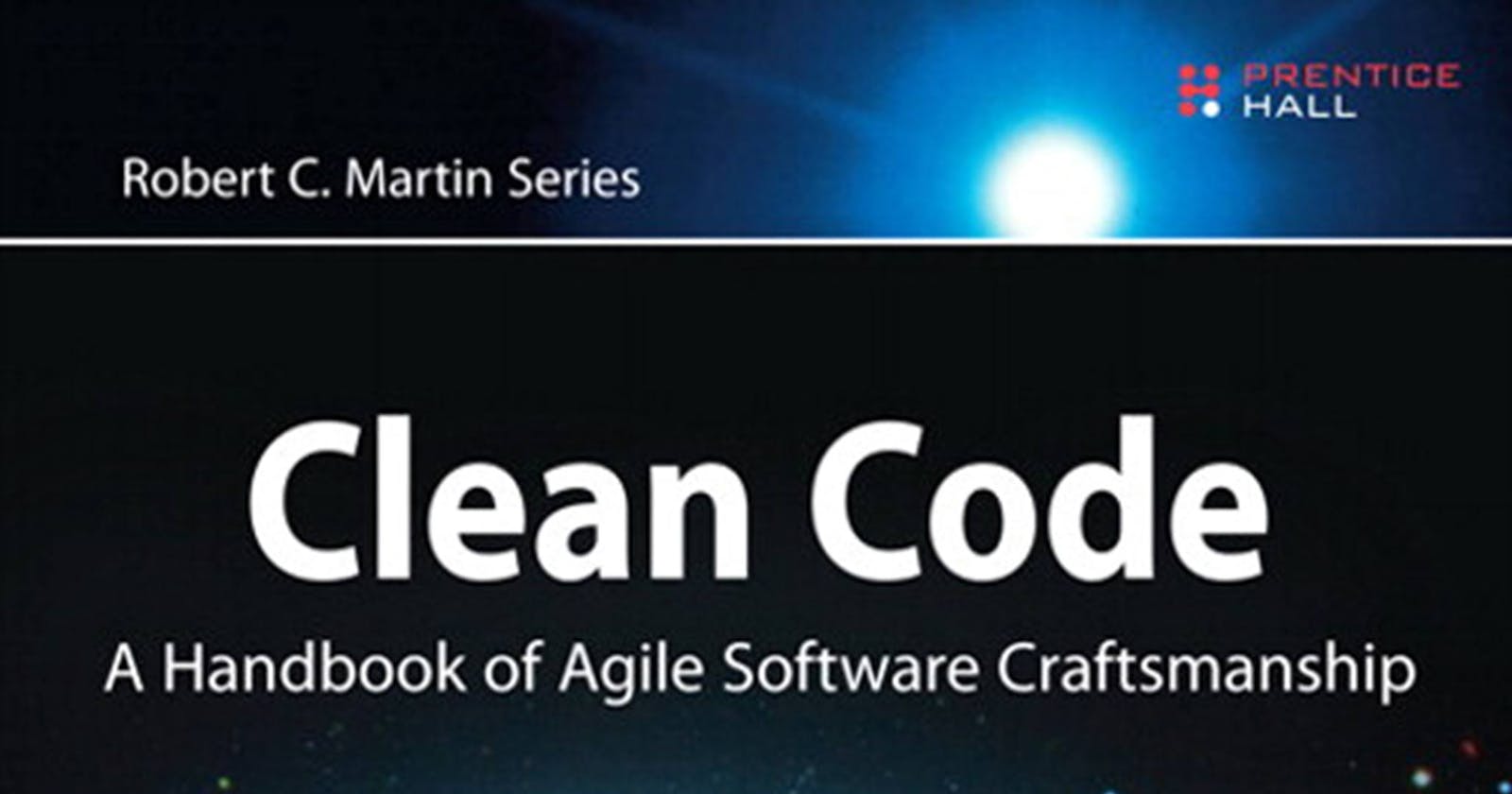Clean code best practices: Tips and examples for writing maintainable software
Table of contents
No headings in the article.
"Clean Code" A Handbook of Agile Software Craftsmanship is a book by Robert C. Martin (also known as "Uncle Bob") that provides guidelines for writing high-quality, maintainable code. The book covers a wide range of topics, including design principles, coding conventions, and testing practices, with a focus on the importance of writing code that is easy to read, understand, and modify.
One of the key themes of the book is the importance of using meaningful names for variables, functions, and other identifiers. Martin argues that good names are essential for making code readable and maintainable, and that the time spent choosing good names is time well spent. He recommends using descriptive, unambiguous names that clearly reflect the purpose of the identifier, and avoiding abbreviations and acronyms that can be confusing or hard to understand.
For example, consider the following C# code:
int d; // elapsed time in days
This code uses a single-letter identifier to represent the elapsed time in days, which is not very descriptive or meaningful. A better name might be something like "elapsedDays" or "daysElapsed", which clearly conveys the purpose of the variable.
Another important principle of clean code is the use of clear and concise code. Martin argues that code should be easy to read and understand, and that unnecessary complexity or abstraction should be avoided. He recommends using simple, clear functions and methods that do one thing and do it well, and avoiding long chains of conditional statements or other complex constructs.
For example, consider the following code:
bool isValidEmail(string email)
{
if (email == null) return false;
if (email.Length > 100) return false;
if (!email.Contains("@")) return false;
if (email.EndsWith(".")) return false;
return true;
}
This code defines a function that checks whether a given string represents a valid email address. The function uses a series of conditional statements to check various conditions, such as whether the email is null, whether it is too long, and whether it contains an "@" symbol. While this code is functional, it is not very clear or concise, and it could be made more readable by refactoring it into separate functions for each check.
Martin also emphasizes the importance of following the single responsibility principle, which states that each function or class should have a single, well-defined purpose. This means that a function should do one thing and do it well, and should not be cluttered with unrelated functionality. Similarly, a class should have a single, cohesive purpose and should not be responsible for multiple, unrelated tasks.
For example, consider the following C# code:
class Customer
{
public string Name { get; set; }
public string Email { get; set; }
public string Phone { get; set; }
public string Address { get; set; }
public void Save()
{
// Save customer to database
}
public void SendWelcomeEmail()
{
// Send welcome email to customer
}
}
This code defines a Customer class that has properties for storing customer information and methods for saving the customer to a database and sending a welcome email. While this class is functional, it violates the single responsibility principle, as it is responsible for both storing customer information and performing actions on that information. A better design would be to separate these responsibilities into separate classes, such as a CustomerRepository class
Another important aspect of clean code is the use of comments. Martin advises that comments should be used sparingly, and only to provide additional information that is not already expressed in the code itself. He advises against using comments to explain bad code, as this can create the impression that the code is acceptable as long as it is commented. Instead, he recommends rewriting the code to make it self-explanatory, so that comments are not necessary.
One key technique for writing clean, maintainable code is test-driven development (TDD), which involves writing tests before writing the code itself. This allows you to ensure that your code is correct and meets the requirements of the project, and makes it easier to identify and fix any issues that may arise. Martin recommends using automated tests to validate your code, and using a testing framework such as NUnit to write and run your tests in C#.
One important principle of clean code is the use of simple, clear code that is easy to read and understand. Martin recommends avoiding unnecessary complexity or abstraction, and using simple, clear functions and methods that do one thing and do it well. For example, consider the following C# code:
int ComputeSum(int a, int b)
{
return a + b;
}
This function defines a simple, clear function that adds two integers and returns the result. It is easy to understand what this function does, and it is easy to modify or reuse if necessary.
Martin also advises against using global variables, as these can make it harder to understand the flow of data in your program and can lead to hard-to-debug issues. Instead, he recommends using local variables or object-oriented techniques such as encapsulation to manage the flow of data in your program. For example, consider the following C# code:
class Calculator
{
private int result;
public void Add(int value)
{
result += value;
}
public int GetResult()
{
return result;
}
}
This code defines a Calculator class that uses a private result variable to store the current result, and provides public methods for adding values and retrieving the result. By encapsulating the result variable in this way, we can manage the flow of data more effectively and avoid the use of global variables.
Another important principle is the use of error handling and exception handling. Martin advises that errors should be handled gracefully and transparently, and that exceptions should be used only for exceptional circumstances. He recommends using try/catch blocks to handle exceptions, and throwing exceptions only when necessary, rather than using error codes or other cumbersome error-handling techniques. For example, consider the following C# code:
try
{
int result = Divide(a, b);
Console.WriteLine(result);
}
catch (DivideByZeroException ex)
{
Console.WriteLine("Cannot divide by zero");
}
This code uses a try/catch block to handle a possible DivideByZeroException that might be thrown by the Divide function. If the exception is thrown, the catch block will handle it gracefully by displaying an error message to the user.
Martin also emphasizes the importance of refactoring, or the process of improving the design of existing code. He argues that refactoring is an essential part of the software development process, and that it allows you to improve the design of your code over time, making it more maintainable and scalable. He recommends using tools such as automated refactoring tools or code review tools to help identify areas of your code that could be improved. For example, consider the following C# code:
class Customer
{
public string FirstName { get; set; }
public string LastName { get; set; }
public string Email { get; set; }
public string Phone { get; set; }
public string FullName
{
get
{
return FirstName + " " + LastName;
}
}
public bool IsValidEmail()
{
// Validate email address
}
public bool Save()
{
// Save customer to database
}
}
This code defines a Customer class with properties for storing customer information and methods for validating the email address and saving the customer to a database. While this class is functional, it could be improved through refactoring. For example, we could move the email validation logic into a separate, reusable function, and we could use a separate class or repository to handle database interactions. By refactoring the code in this way, we can make it more maintainable and scalable.
In addition to these principles, Martin offers a number of specific coding conventions and best practices for writing clean code. For example, he advises using whitespace and indentation consistently to make your code more readable, and using descriptive, meaningful names for variables, functions, and other identifiers. He also recommends using a consistent style and following established coding standards, as this can make your code easier to read and understand.
Overall, clean code is all about writing code that is easy to read, understand, and modify, and that follows best practices for design, testing, and maintainability. By following these principles, you can make your code more reliable, efficient, and scalable, and make it easier to work with as your project evolves. Whether you're a seasoned software developer or just starting out, Clean Code is a valuable resource for anyone looking to improve their skills and write high-quality code.

